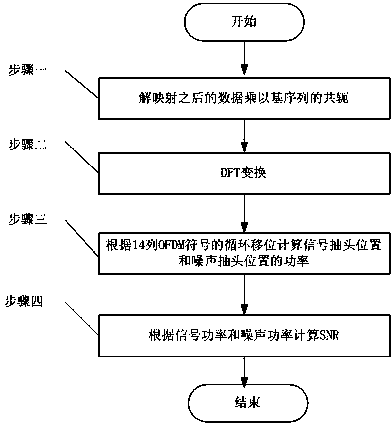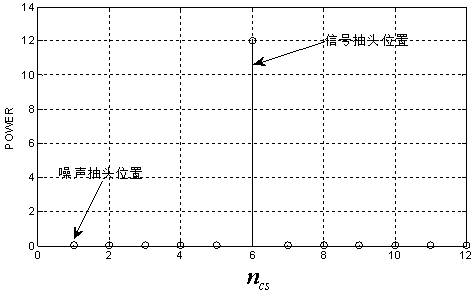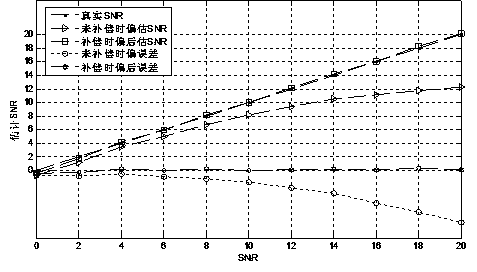Signal to noise ratio (SNR) estimation method of physical uplink control channel (PUCCH) of long term evolution (LTE) system
A signal-to-noise ratio estimation and channel technology, applied in the direction of using the return channel for error prevention/detection, wireless communication, power management, etc., can solve problems such as incomplete response, inaccurate estimation, and low signal-to-noise ratio
- Summary
- Abstract
- Description
- Claims
- Application Information
AI Technical Summary
Problems solved by technology
Method used
Image
Examples
Embodiment Construction
[0031] The technical solution of the present invention will be described in detail below in conjunction with the drawings and embodiments.
[0032] This paper proposes a method to calculate the signal-to-noise ratio by using the information of all OFDM symbols (pilot symbols and data symbols) based on Fourier transform to separate the signal and noise vectors. The carrier is multiplied by the conjugate of the base sequence to eliminate the influence of the base sequence, and then a DFT transformation is performed to obtain a cyclic shift sequence. If there is a time offset, time offset compensation needs to be done, and finally the corresponding 14-column symbols are taken out (considering the short format ), obtain the cyclic shift value n corresponding to each column symbol of the currently scheduled UE (terminal) according to the protocol cs (1), take out the corresponding signal tap coefficients and noise tap coefficients, respectively calculate the energy corresponding to...
PUM
 Login to View More
Login to View More Abstract
Description
Claims
Application Information
 Login to View More
Login to View More - R&D
- Intellectual Property
- Life Sciences
- Materials
- Tech Scout
- Unparalleled Data Quality
- Higher Quality Content
- 60% Fewer Hallucinations
Browse by: Latest US Patents, China's latest patents, Technical Efficacy Thesaurus, Application Domain, Technology Topic, Popular Technical Reports.
© 2025 PatSnap. All rights reserved.Legal|Privacy policy|Modern Slavery Act Transparency Statement|Sitemap|About US| Contact US: help@patsnap.com



